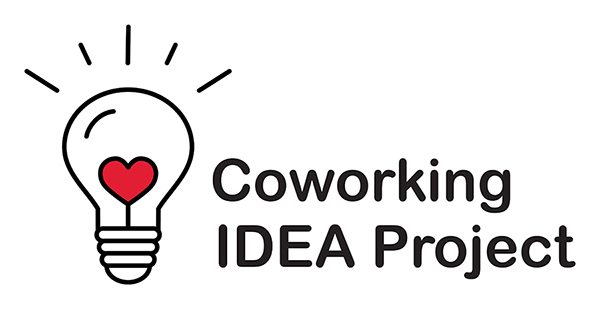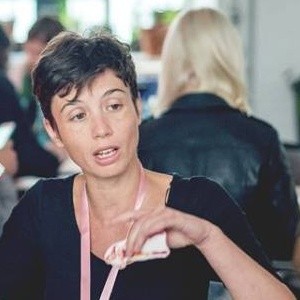October’s IDEA Challenge is facilitated by Barbara Andreatta and Marc Navarro.
The IDEA Project is a global initiative aimed at developing Inclusivity, Diversity, Equity and Accessibility (IDEA) within coworking and collaborative spaces. Each month, we will host a challenge that assists you in broadening your understanding of IDEA, whilst giving clear actions for you to take to develop IDEA within your space.
Challenge #9 – How to Create and Curate Diverse and Inclusive Events
Coworking spaces are known for the events that they create to bring together the community. For the community aspect of these events to be true, coworking spaces need to ensure that the events are inclusive and diverse. Not just in the topics that they speak on, or the content that they create, but also when choosing a location and event speakers.
When creating content for these events, the attendees need to be at the heart of everything that you create. As Marc says, creating an event is like telling a story. The characters are the speakers and the attendees are the readers. Every word the speakers usher, and even the order they take turns in speaking, makes the difference between a mediocre and awesome tale.
To them, the creation of diverse and inclusive events need to be the goal from the start. From the get go the content, the panel of speakers, and even the location need to have the community in mind.
Barbara and Marc know that creating these events can be tricky and sometimes you can forget someone along the way. That is why they facilitated the process by creating a checklist that coworking spaces can use for the creation and curation of diverse and inclusive events.
How to start the planning for an inclusive event
Marc says that the first thing coworking spaces should think about is the theme. “Think about the theme and ask ‘what are we talking about?’ this will help guide you through the process,” says Marc. Barbara agrees that having a clear idea is important before you start the process.
Then, according to Marc, it is important to set out goals for the event. What messages are being conveyed? What is the end goal? What knowledge should the audience walk away with? What should they be able to know or do at the end of the event? If these questions are answered, then creating the event will go smoothly.
To Marc it is important to have a strong start that leads to the right foundation. Once the foundation has been established, then the next stages will go more smoothly. Once the goals have been set out and the theme has been finalised, creating the content will be the next step.
“Creating a diverse event does not start at zero, it starts at minus one. Don’t fall in the trap of looking at the speaker list and then realising that your panel isn’t diverse enough, and then quickly wanting to add a female or person of colour,” says Marc.
Barbara is of the same opinion and mentions that it can be quite tricky when having to decide what content should be used, but especially so when choosing the panelists for events. One wrong move and your event is white washed and your audience can’t relate to it.
How do you establish who your audience is?
After your foundation, it is important to ask “who is the audience?” Usually, as Marc points out, these events are focused on certain groups. And without knowing it, event creators only look at race and gender, when in fact there are more layers to the concept. Marc says that looking at age, language, body shape, location, education, employment, background, and experience is just as important.
According to Barbara, it is also important to think about where the event will be hosted. Will the community have to travel far? Will it still be within the same zip code? The zip code does not always seem that important, but think about how different cities have different connotations. If the community who will be attending the event is part of a poorer area, then attending an event in the richer part of the city is not a good idea. The audience will not feel welcome, first of all, and secondly they will not be able to relate to the problems.
As an experienced community manager, Barbara has found that there exists a type of homogeneity amongst community members. For her it is best to find that relevance that each person shares and then focus on that when creating events. When the audience lives within the same area, they are bound to fall within the same economic class, they usually speak the same language, and most of their children attend the same school.
Marc points out that hosting an event in large cities, like Barcelona, is expected to have a diverse group of attendees. The reason for this is because many foreigners live in cities like this. He uses the example of Barbara, who is Italian, and lives in Barcelona. Even though they share the same zip code, they do not share the same background.
Therefore, before starting any planning for the event, it is best to know the audience, know what they want and keep their ideas and opinions in mind. The best way to achieve this is by being part of the community and diving deep into what they expect from events.
The importance of event creating
A certain responsibility comes with event creation. Barbara says that by creating these events, new ideas get relayed to the audience. “When thinking about an event and the panel, there is this responsibility in some way to provide to attendees a role model to follow. The people who are chosen to be panelists, are the ones who represent the success story,” says Barbara.
Usually coworking spaces make use of sponsors to finance the events. Marc’s problem with sponsored content is that the coworking space needs to satisfy the sponsor to ensure the financial support. Sometimes sponsors sell to the audience instead of trying to share their knowledge with the audience and add value to the event. Even though they try to be subtle, they are still selling to the audience. If the content comes across as an advertisement, the audience might not receive it well, and shines a bad light on the event manager.
The most important aspect of creating diverse and inclusive content is not to say “look at the diverse content”. No, it is about making sure that topics are covered that will interest the community and the audience. The content needs to make sense to them and their experiences.
How to take part in the October IDEA Challenge
Barbara and Marc have set out a small challenge for coworking owners and managers to follow. Everybody should think about where they should start to add diversity in their planning process. Think about which kind of role model the panelists presented in the past, and try to do something diverse for future events.
The larger challenge that Barbara and Marc have set out is to create goals and commit to the quality of the diversity and inclusivity of the content for events. It is important to get to know the audience and the community to their fullest degrees. Find out what makes them tick, why they behave the way that they do, and what the homogeneity amongst them is.
Make use of the checklist created when planning for an event. It serves as a checklist to ensure that events are diverse and inclusive, that they have the audience in mind, and that answer all of the right questions. It also helps to ensure that the right speakers are chosen for the event and that they are knowledgeable in the topic.
When the audience is at the center when planning the event, then inclusivity and diversity can easily be achieved. Make sure to be mindful of the audience, their needs, and their expectations. Remember that the theme and the goal of the events should be the starting point of planning any event, and be sure to be diverse from the get-go.
October 27th 2021
9:00 AM Pacific | 12:00 PM Eastern
5:00 PM UK | 6:00 PM CET



